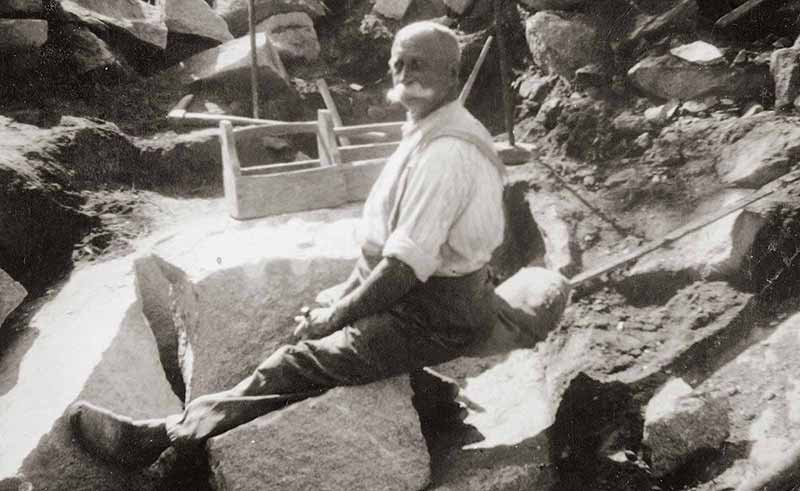With the granite boom, the quarry became the workplace of countless people in the Bavarian Forest. Quarries now tore entire flanks from the mountains, and blasting was routinely carried out to remove raw blocks from the rock faces. The heavy loads were moved to the workplaces with the help of jib cranes and trolleys on rails. I’ll explain these processes in more detail outside in our show quarry.
Semi-skilled stonecutters and trained stonemasons usually earned their living in the quarries on a piecework basis. Therefore, they weren’t paid according to hours worked, but according to the number of items produced.
Unskilled laborers, on the other hand, were paid a daily wage and were used for the rough and heavy work in the quarry. This included clearing work with pick and shovel, transporting the stones from the quarry to the work sheds or loading the finished stones. Women also did the same heavy work, but were generally paid less than the male quarrymen.
A typical task assigned to women involved the tedious grinding and polishing of the stones. The large grinding block here provides an impression of how arduous this work was. Try it out and then imagine having to do this work for hours on end, day after day!
On the screen above you, you can see images of quarries from the first half of the 20th century. It’s unquestionable that the people in the quarries worked hard. Nevertheless, the stonecutters usually had fond memories of the time before mechanization. The silence in the quarry played a major role: you could hear birds chirping, talk to colleagues, and maybe even sing together. Plus, the pace of labor was largely determined by the workers, themselves.
Later, things were to change completely. I’ll tell you more about that in a moment. We’ll meet again back by the big green machine.
